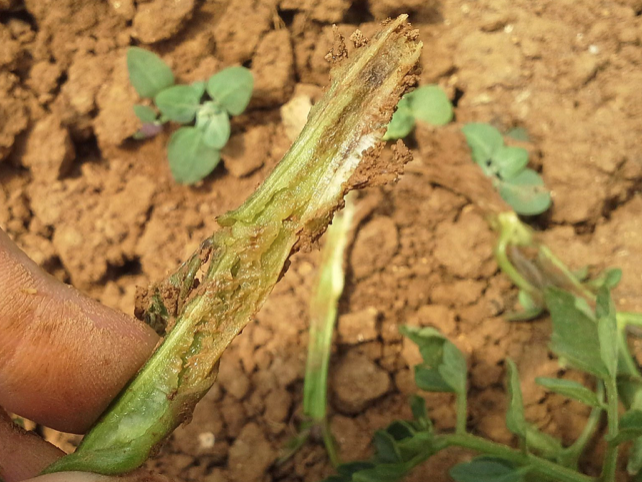Fusarium wilt (Fusarium oxysporum sp. Lycopersici)
Credit: Biovision-Infonet

(c) Scot Nelson, 2015

(c) A.M. Varela & A.A. Seif, icipe
The lower leaves of the plant usually turn yellow and die. One or more branches may exhibit such symptoms. Leaflets on one side may be affected while those on the other side are symptomless. Diseased leaves readily break away from the stem. When affected stems just above ground level and petioles are cut diagonally, a reddish-brown discolouration of the water conducting tissues will be observed. The fungus is both seed- and soil-borne. It causes most damage on light, sandy soils. It is most active at temperatures between 25 and 320 C. The fungus can survive in the soil indefinitely even when no tomatoes are grown. It can also survive in fibrous roots of weeds (e.g. Amaranthus, Digitaria and Malva species). Acidic soils (pH 5.0 to 5.6) and excessive nitrogen fertilisation promote disease development. Infestation by root-knot nematodes encourages the disease.
| What to do: Use resistant tomato varieties (e.g. “Fortune Maker”, “Rio Grande”, “Tengeru 97”, “Roma VFN”). Use certified disease-free seeds. Do not locate seedbeds on land where Fusarium wilt is known to have occurred. Where soil is acidic, raise the pH by applying lime or farmyard manure. Avoid excessive nitrogen fertilisation and control root-knot nematodes. |